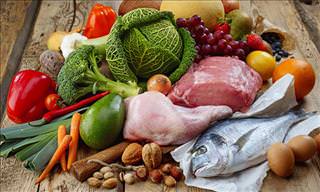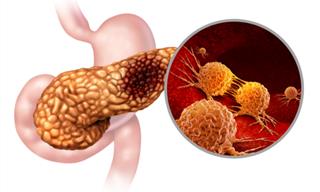For anyone concerned about their well-being, understanding the significance of different vitamins and minerals is crucial. Magnesium, the fourth most abundant mineral in our bodies, plays a vital role in our bones, cells, and organs. Unfortunately, the levels of magnesium in our bodies have been declining over time due to factors such as reduced absorption in the intestines, medication use, and conditions like diabetes that result in its excretion through urine. Additionally, exposure to heat can cause magnesium loss through sweat. In this article, we will explore the numerous health benefits of magnesium, provide recommended intake levels based on age and gender, and highlight eight excellent food sources that you should incorporate into your daily diet.

The Health Benefits of Magnesium
Magnesium possesses remarkable properties that positively impact our bodies. Some of its notable benefits include:
- Facilitating the production of energy and proteins.
- Assisting in the creation and repair of DNA.
- Maintaining muscle contraction and relaxation
- Regulating the nervous system
- Treating depression
- Maintenance of sugar and insulin levels in the blood and reducing blood pressure
- Anti-inflammatory and preventing migraines

What is the recommended daily amount of magnesium?
To ensure optimal health benefits, it's important to consume an appropriate amount of magnesium on a daily basis. The recommended daily amounts vary depending on gender and age. For women aged 14-18, 360 mg of magnesium is recommended, while women over the age of 18 should aim for 310 mg. Men aged 14-18 should consume 410 mg, while men over the age of 18 should aim for 400-420 mg.
8 Rich magnesium foods that you should consume
To meet the recommended daily amounts of magnesium, it's beneficial to include foods that are rich in this mineral in your diet. Here are 8 types of foods that are particularly high in magnesium, listed from lowest to highest magnesium content per 100 grams:
1. Fatty fish - contains 24 mg of magnesium, which is equivalent to 6% of the recommended daily amount for fillet fish.
Fish, like salmon, mackerel, and halibut, are well-known for their high omega-3 acid content. However, what many people may not be aware of is that these types of fish also provide a good amount of magnesium. In fact, 100 grams of fish fillet from these species contains 21 mg of protein, as well as potassium, B vitamins, and selenium, which has been linked to the treatment of various types of cancer. A fascinating study conducted in 2010 even found a connection between consuming fatty fish and reducing the risk of chronic diseases, particularly heart diseases.
2. Bananas contain approximately 27 mg of magnesium, which accounts for about 7% of the recommended daily intake.
The beloved yellow energy bomb is widely known for its high potassium content (358 mg per 100 grams), but it is also a great source of magnesium. In addition to these beneficial nutrients, bananas also contain vitamins C and B6, manganese, and dietary fiber. It's important to note that overripe bananas, which are still edible, contain resistant starch that is beneficial to our bodies, similar to dietary fiber. This starch has been linked to lower blood sugar levels and improved gut health in studies conducted in 2016 and an Australian study in 2001, respectively. However, ripe bananas are not recommended for diabetics due to their high sugar and carbohydrate content compared to other fruits.

3. Avocado - 29 mg, providing 7% of the recommended daily amount.
Regardless of your personal preference for avocado, chances are you're already aware of its impressive properties. In addition to magnesium, this fruit contains a wealth of nutrients such as B vitamins and vitamin K. Similar to bananas, avocados are also packed with potassium (485 mg per 100 grams). Moreover, they are rich in heart-healthy unsaturated fats and dietary fiber. Avocados also possess remarkable abilities to reduce inflammation, improve cholesterol levels, and promote a feeling of fullness after meals. To savor the taste of avocado and reap its numerous health benefits, you can indulge in these delightful avocado-based dishes.
4. Green vegetables - 87 mg, providing 22% of the recommended daily intake (for cooked spinach).
Green vegetables such as kale, spinach, and turnips are not just a great addition to salads, but they are also packed with health benefits. These veggies are rich in magnesium, iron, manganese, vitamins A, C, and K, as well as flavonoids that help protect our cells from harm. In fact, a study from 2011 found that spinach contains components that safeguard our DNA. If you want to discover more about spinach and find amazing recipes that incorporate it, check out the following guide.
5. Whole grains - 231 mg, which accounts for 58% of the recommended daily amount (for buckwheat).
Lately, there has been a growing awareness about the health benefits of whole grains, which include oats, buckwheat, and quinoa. These grains are not only packed with magnesium, but they also contain high levels of B vitamins, selenium, manganese, and dietary fiber. Moreover, a study conducted in 2010 revealed that consuming whole grains can help reduce inflammation and lower the risk of heart disease. Buckwheat and quinoa, in particular, stand out as they are rich in protein and antioxidants, surpassing more common grains like corn and wheat. Additionally, they are gluten-free, making them an excellent, healthy option for individuals with celiac disease.

6. The legume family consists of various plants like lentils, beans, chickpeas, peas, and soybeans, each containing different levels of magnesium. For instance, 100 grams of soy contains 289 mg of magnesium, while the same amount of cooked black beans only has 70 mg (17% of the recommended daily intake). All legumes are also rich in potassium, iron, and serve as a primary source of protein for vegans. A study conducted in 2014 found that dry beans are high in dietary fiber and have a low glycemic value, which can potentially help reduce cholesterol levels and the risk of heart disease. Additionally, tofu, made from soy milk processed through a coagulation process, contains 53 mg of magnesium per 100 grams, along with other minerals like calcium, iron, manganese, and selenium. You can enjoy these benefits of tofu through the following 5 recipes.
7. Nuts - 292 mg, 73% of the recommended daily intake.
Who doesn't enjoy snacking on crackers every now and then? Today, we'll let you in on a secret: one of our favorite crackers, nuts like almonds, cashews, and Brazil nuts, actually offer numerous health benefits. One of these benefits is their high magnesium content. Additionally, nuts are a great source of dietary fiber and unsaturated fat. According to a study conducted at the University of Toronto, consuming about 50 grams of nuts per day can help diabetics balance their blood sugar and cholesterol levels. Brazil nuts, in particular, are an excellent source of selenium, while all nuts are known for promoting heart health, reducing appetite, and possessing anti-inflammatory properties. If you're intrigued, you'll be amazed at the fantastic benefits of eating just four cashews a day.
8. Seeds - 535 mg, providing 134% of the recommended daily intake.
The seeds umbrella encompasses flax, pumpkin seeds, and chia seeds, all of which are abundant in magnesium, iron, antioxidants, dietary fiber, and healthy unsaturated fats like omega 3. Flax seeds have the added benefit of potentially lowering cholesterol levels and aiding in the fight against breast cancer, as suggested by a Canadian study. If you're looking to nourish your body with these beneficial properties and indulge in a delightful meal that will satisfy both you and your loved ones, feel free to try making a flax seed dough pizza.
 Go to BabaMail
Go to BabaMail




























